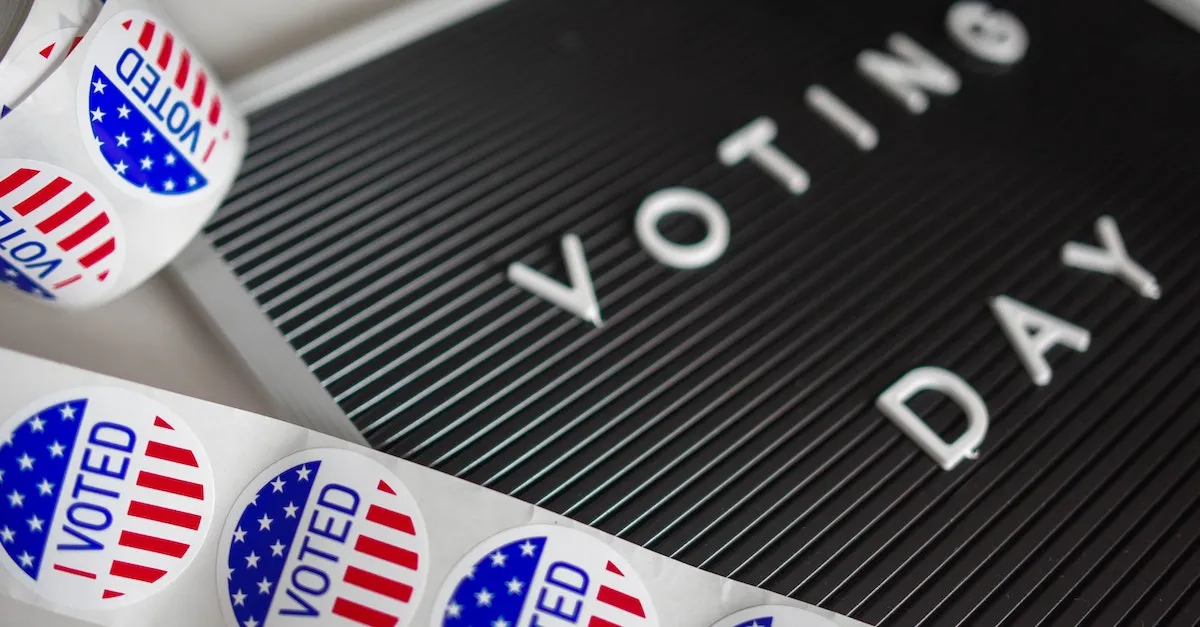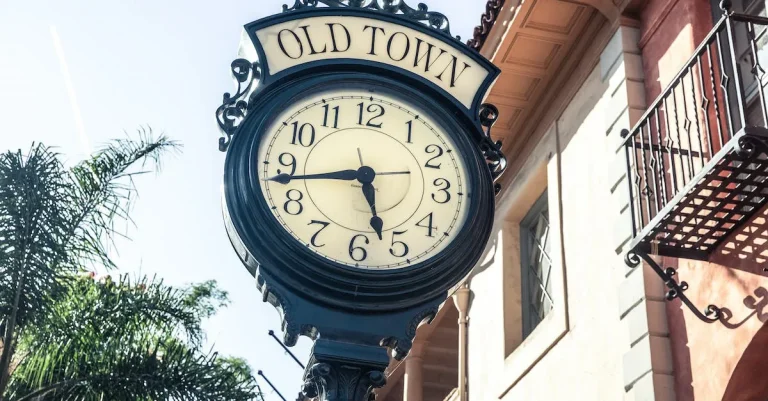Could Hillary Clinton Have Won Texas In 2016?
In recent election cycles, some Democrats have dreamed of turning Texas blue. But could Hillary Clinton have actually won Texas’s crucial 38 electoral votes in the divisive 2016 presidential election? If you’re short on time, here’s a quick answer: While unlikely, some experts believe Clinton could have won Texas in 2016 under optimal conditions. Carrying Texas would have required high Latino turnout and suburban swings that nearly played out.
In this comprehensive analysis, we’ll assess Clinton’s chances of winning Texas by examining Lone Star State voting trends, polling data, demographic shifts, Clinton’s campaign strategy, results of key down-ballot races, and what factors could have potentially tipped Texas in Clinton’s favor in the 2016 presidential election.
Texas’s Recent Voting Trends in Presidential Elections
When it comes to presidential elections, Texas is often seen as a stronghold for the Republican Party. However, recent voting trends suggest that the Lone Star State may not be as solidly red as it once was.
Let’s take a closer look at Texas’s voting history and explore whether Hillary Clinton could have won the state in 2016.
Steady Red State Since 1980
Texas has long been considered a reliable Republican state, consistently voting for the GOP candidate in presidential elections since 1980. The state’s conservative values and strong Republican base have made it challenging for Democratic candidates to gain traction.
However, as demographics and attitudes shift, some experts believe that the political landscape in Texas may be slowly changing.
Narrowing GOP Victories Since 2000
While Texas has remained a Republican stronghold, the margin of victory for GOP candidates has been decreasing in recent years. In 2000, George W. Bush won Texas by a comfortable 21-point margin. However, in 2016, Donald Trump only won the state by a 9-point margin.
This narrowing gap suggests that Texas is becoming more competitive for Democratic candidates.
Several factors contribute to this trend, including a growing Hispanic population and an influx of young voters. In 2016, Hispanics accounted for 28% of the Texas electorate, up from 20% in 2012. This demographic shift has the potential to reshape the state’s political landscape and provide an opportunity for Democratic candidates to make inroads.
2012 Results
In the 2012 presidential election, Texas voted overwhelmingly for the Republican candidate, Mitt Romney, who won the state with 57% of the vote. However, it is worth noting that President Barack Obama received 41% of the vote, showing that a significant portion of the Texas electorate was willing to support a Democratic candidate.
Furthermore, in urban areas like Austin, Houston, and Dallas, Democrats tend to perform better than in rural areas. These urban centers have seen a surge in population and are more diverse and liberal-leaning compared to rural parts of the state.
This divide between urban and rural areas further suggests that Texas may be more politically competitive than it appears on the surface.
While it is difficult to say definitively whether Hillary Clinton could have won Texas in 2016, the shifting demographics and narrowing margin of victory for Republican candidates indicate that the state is becoming more politically diverse.
With the right strategy and a strong grassroots movement, it is not inconceivable for a Democratic candidate to win Texas in the future.
Sources:
Pre-Election Polling and Projections in 2016
The 2016 presidential election between Hillary Clinton and Donald Trump was one of the most closely watched and highly debated elections in recent history. While Texas has long been considered a stronghold for Republicans, some experts and analysts wondered if there was a chance that Clinton could have won the traditionally red state.
Pre-election polling and projections shed some light on the competitiveness of the race in Texas.
Polls Showing a Tight Race
Leading up to the 2016 election, several polls indicated that the race in Texas was closer than expected. These polls suggested that Clinton had a chance to narrow the gap and potentially win the state.
One such poll conducted by the University of Texas and the Texas Tribune in October 2016 showed Clinton trailing Trump by only 3 percentage points. This unexpected closeness in the race caught the attention of political observers and raised the possibility of a Clinton victory in Texas.
Another poll conducted by Emerson College in September 2016 also indicated a tight race in Texas, with Clinton and Trump in a statistical tie. This poll suggested that Clinton had made significant inroads in the traditionally conservative state and had a real chance of winning.
However, it’s important to note that polling is not always a perfect predictor of election outcomes. There can be a margin of error, and polling results can change over time. While these polls showed a close race in Texas, it does not necessarily mean that Clinton would have won the state.
Forecasts Favoring Trump
Despite the polls suggesting a competitive race in Texas, most election forecasts and projections still favored Trump to win the state. These forecasts take into account a wide range of factors, including historical voting patterns, demographics, and polling data.
One widely cited forecast model is FiveThirtyEight, which uses a combination of polling data, historical trends, and other factors to predict election outcomes. In their final forecast for the 2016 election, FiveThirtyEight gave Trump a 91% chance of winning Texas.
This forecast was based on the overall strength of the Republican Party in the state and the historical voting patterns.
Other forecast models, such as The Cook Political Report and Sabato’s Crystal Ball, also predicted a Trump victory in Texas. These forecasts took into account similar factors and concluded that Texas would remain a Republican stronghold in the 2016 election.
It’s worth noting that while Clinton did not win Texas in 2016, she did perform better than previous Democratic candidates. She received a higher percentage of the vote compared to Barack Obama in 2012, indicating a potential shift in the political landscape of the state.
Texas’s Changing Demographics Helping Democrats
Over the past few decades, Texas has experienced a significant shift in its demographic makeup, which has had implications for its political landscape. This change is gradually helping Democrats gain ground in a traditionally Republican stronghold.
Let’s explore the factors behind this shift and analyze whether Hillary Clinton could have won Texas in 2016.
Rapid Growth in Latino Population
One of the key factors contributing to the changing demographics of Texas is the rapid growth of the Latino population. According to the U.S. Census Bureau, Latinos accounted for nearly 40% of the state’s population in 2019, making them the largest ethnic group in Texas.
This increase in Latino representation has translated into a growing political influence, as Latinos tend to lean more towards the Democratic Party.
The Latino vote has historically been crucial in swing states, and Texas is no exception. In recent years, Democrats have made significant efforts to engage with Latino voters and address their concerns.
This outreach has resulted in increased voter registration and turnout among Latinos, which has helped Democrats narrow the gap with Republicans in Texas.
Increasing Education Levels
Another factor contributing to the Democrats’ growing support in Texas is the increasing education levels among its population. According to the National Center for Education Statistics, the percentage of Texans with a bachelor’s degree or higher has been steadily rising over the past decade.
This trend is particularly notable among younger voters.
Higher education levels are often associated with more liberal political beliefs and a greater likelihood of voting for Democratic candidates. As Texas continues to experience an increase in college-educated residents, it is reasonable to expect that the Democratic Party will continue to gain support in the state.
Migration from Liberal States
Migration patterns also play a role in the changing demographics of Texas. Many individuals from liberal-leaning states, such as California and New York, have been relocating to Texas in search of job opportunities, a lower cost of living, and favorable business environments.
This influx of residents from more progressive states has contributed to a shift in the political ideology of certain areas within Texas.
While it is difficult to quantify the exact impact of this migration on the 2016 election, it is reasonable to speculate that it may have had some influence. These individuals bring with them their political beliefs and voting patterns, which can potentially impact the outcome of elections in their new home state.
Clinton’s Late Efforts to Win Texas
During the 2016 presidential election, Hillary Clinton’s campaign made some late efforts to win the traditionally red state of Texas. Although Texas had consistently voted for Republican candidates in previous elections, Clinton’s team saw an opportunity to make inroads and potentially flip the state.
Campaign Spending in Texas
One of the ways Clinton’s campaign tried to win Texas was through increased campaign spending in the state. They allocated a significant portion of their resources to advertising and organizing events in Texas, hoping to sway undecided voters and mobilize their base.
According to OpenSecrets.org, Clinton’s campaign spent over $15 million in Texas, a substantial increase compared to previous Democratic campaigns. This strategic decision demonstrated their belief in the possibility of winning the state.
Rallies with Key Surrogates
Clinton’s team also organized rallies in Texas with key surrogates, including former President Barack Obama and First Lady Michelle Obama. These high-profile appearances aimed to energize supporters and generate enthusiasm for Clinton’s candidacy.
By leveraging the popularity and charisma of these influential figures, the campaign hoped to increase turnout and persuade undecided voters to choose Clinton.
Mobilizing the Latino Vote
Another important aspect of Clinton’s strategy in Texas was mobilizing the Latino vote. With a significant Hispanic population, Texas presented an opportunity for Clinton to gain support from this demographic.
The campaign focused on addressing issues important to the Latino community, such as immigration reform and healthcare access. They also targeted Latino voters through Spanish-language advertisements and outreach efforts.
Despite these efforts, Clinton ultimately did not win Texas in the 2016 election. However, her campaign’s late push in the state demonstrated a willingness to challenge traditional electoral maps and pursue opportunities in unexpected places.
While Texas remained firmly in the Republican column, Clinton’s efforts in the state may have laid the groundwork for future Democratic campaigns to make Texas a more competitive battleground.
Down-Ballot Races Showing Texas’s Competitiveness
When analyzing the 2016 presidential election, one cannot ignore the intriguing question of whether Hillary Clinton could have won Texas. While Texas has traditionally been a Republican stronghold, there were several down-ballot races that indicated a growing competitiveness in the Lone Star State.
Democratic Senate Challenge
One of the most notable races was the Senate contest between Republican incumbent Ted Cruz and Democrat Beto O’Rourke. O’Rourke’s campaign gained nationwide attention and energized Democratic voters across Texas.
Despite ultimately falling short, O’Rourke narrowed the gap significantly, losing to Cruz by only a few percentage points. This tight race demonstrated that Democrats were making inroads in a state long dominated by Republicans.
Flipping Suburban Congressional Districts
Another indicator of Texas’s competitiveness was the success of Democrats in flipping suburban congressional districts. These districts, predominantly located in major metropolitan areas, had been reliably Republican for years.
However, in the 2018 midterm elections, Democrats were able to win a number of these districts, signaling a changing political landscape.
For example, in the Houston area, Democrat Lizzie Fletcher unseated Republican incumbent John Culberson in the 7th Congressional District. Similarly, in the Dallas-Fort Worth area, Democrat Colin Allred defeated Republican incumbent Pete Sessions in the 32nd Congressional District.
These victories showcased the potential for Democrats to make significant gains in Texas.
It is important to note that while these down-ballot races indicated a greater competitiveness, winning the state in a presidential election remains a formidable challenge for Democrats. Texas has a large Republican base and a history of supporting conservative candidates.
However, the narrow margins in the aforementioned races and the changing demographics of the state suggest that Texas could become a battleground state in future elections.
What Could Have Tipped Texas to Clinton?
Many political analysts have debated whether Hillary Clinton could have won Texas in the 2016 presidential election. Although Texas has traditionally been a Republican stronghold, there are several factors that, if they had aligned differently, could have potentially tipped the state in Clinton’s favor.
Higher Latino Turnout
One key factor that could have made a significant difference in Texas is a higher Latino turnout. Latinos make up a significant portion of the population in Texas, but their voter participation has historically been lower than other demographics.
If Clinton’s campaign had successfully mobilized and energized Latino voters, it could have significantly boosted her chances of winning the state. According to the Pew Research Center, the Latino voter turnout in Texas increased by 10% from 2012 to 2016, but there is still room for improvement.
Further Suburban Swing
Another factor that could have helped Clinton in Texas is a further swing towards Democrats in suburban areas. Suburban voters have traditionally leaned Republican, but there has been a noticeable shift in recent years.
Clinton’s campaign could have focused more on appealing to suburban voters by addressing their concerns and offering policies that resonate with their values. By targeting suburban areas with a tailored message, Clinton may have been able to gain more support and potentially win over some traditionally Republican-leaning voters.
Even More Campaign Focus
Lastly, if Clinton had dedicated even more campaign resources and focus on Texas, it could have made a difference in the outcome. While Clinton did visit the state during the campaign, many argue that her campaign did not invest enough time and resources in Texas compared to other battleground states.
A more concerted effort to engage with voters, hold rallies and town halls, and invest in advertising could have potentially swayed undecided voters and motivated more Democrats to turn out to the polls.
It’s important to note that winning Texas in 2016 would have been a significant challenge for Clinton, given the state’s history of voting Republican. However, by addressing these key factors – increasing Latino turnout, appealing to suburban voters, and dedicating more campaign focus – Clinton may have had a better chance at narrowing the margin of victory for the Republican candidate.
While we can only speculate on what could have happened, it’s clear that these factors could have potentially tipped the scales in favor of Clinton in the Lone Star State.
Conclusion
While Hillary Clinton ultimately lost Texas by 9 points, some experts argue she could have carried the state with high Latino turnout and bigger suburban swings. Clinton likely would have needed to campaign even more aggressively in Texas and invest resources earlier to have a robust ground game ready to turn out sympathetic voters. Her campaign shows Texas’s electoral map is evolving to be more competitive, even if a Democratic victory remains a stretch.








